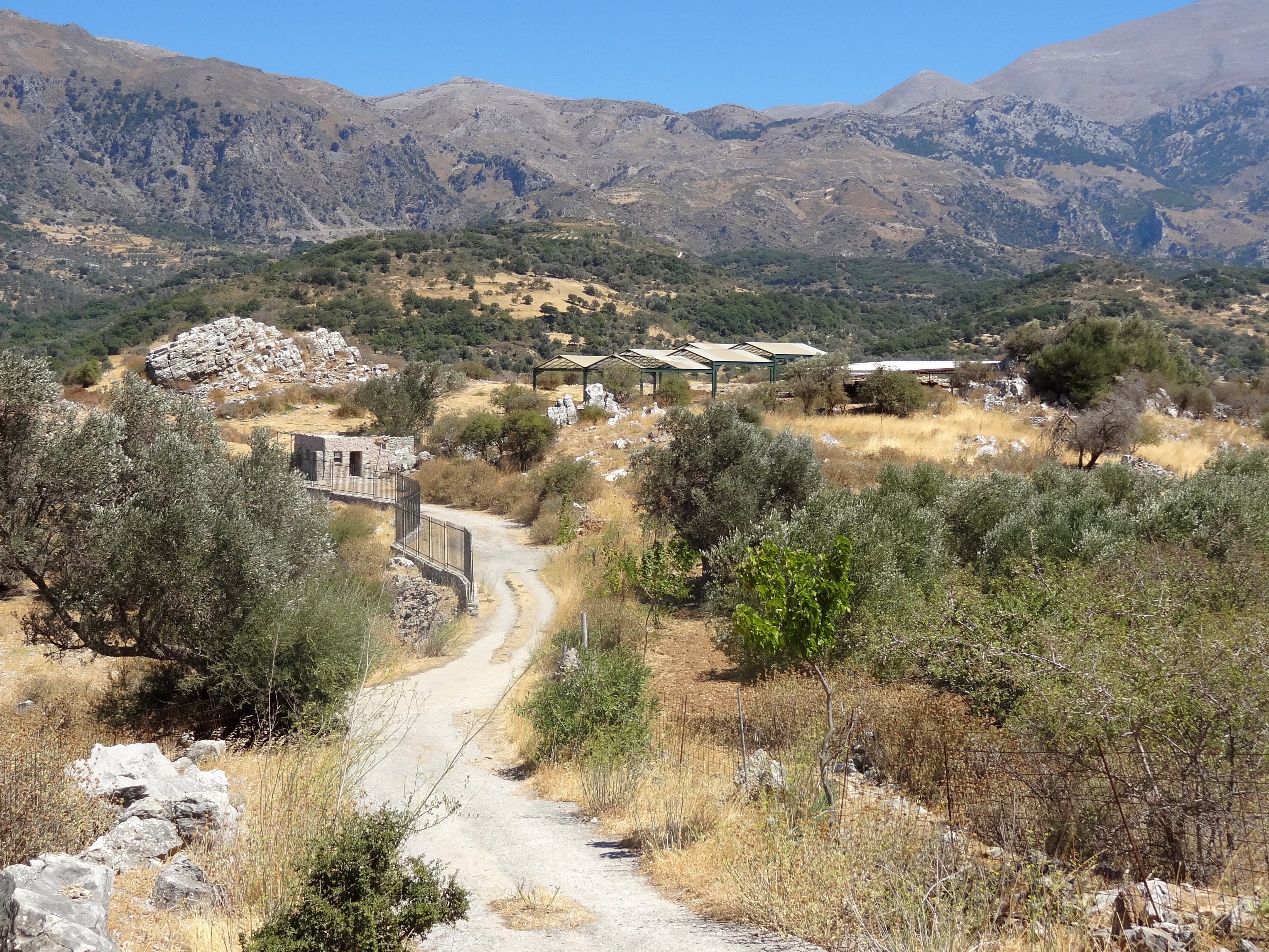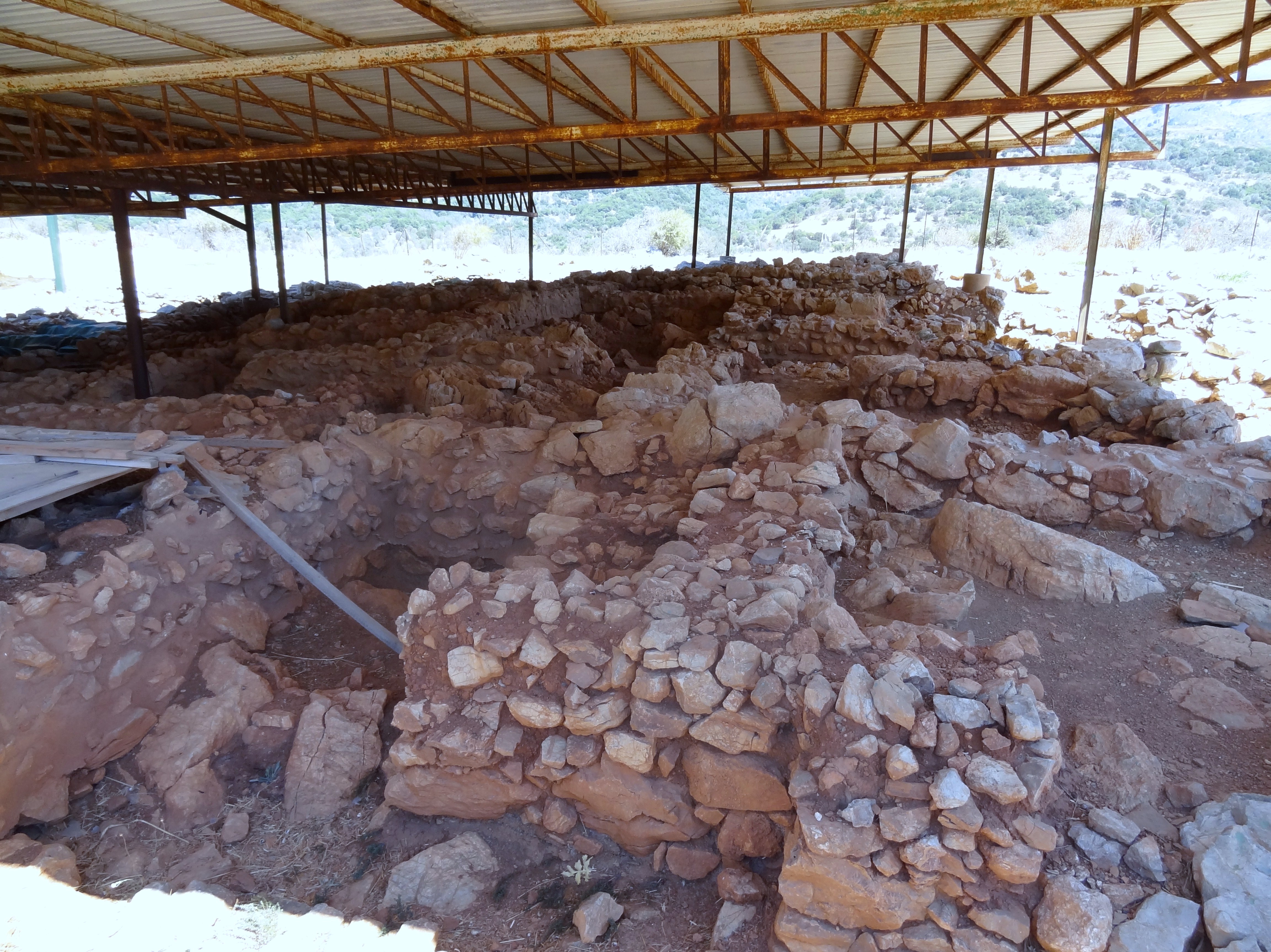Monastiraki, Crete on:
[Wikipedia]
[Google]
[Amazon]
 Monastiraki () is the
Monastiraki () is the
 Monastiraki was first excavated during
Monastiraki was first excavated during
C.Michael Hogan, ''Phaistos Fieldnotes'', The Modern Antiquarian (2007)
 Monastiraki () is the
Monastiraki () is the archaeological
Archaeology or archeology is the study of human activity through the recovery and analysis of material culture. The archaeological record consists of Artifact (archaeology), artifacts, architecture, biofact (archaeology), biofacts or ecofacts, ...
site of an ancient Minoan
The Minoan civilization was a Bronze Age culture which was centered on the island of Crete. Known for its monumental architecture and Minoan art, energetic art, it is often regarded as the first civilization in Europe. The ruins of the Minoan pa ...
town on the island of Crete
Crete ( ; , Modern Greek, Modern: , Ancient Greek, Ancient: ) is the largest and most populous of the Greek islands, the List of islands by area, 88th largest island in the world and the List of islands in the Mediterranean#By area, fifth la ...
. The site is on the plain of Amari, west of the Ida massif
A massif () is a principal mountain mass, such as a compact portion of a mountain range, containing one or more summits (e.g. France's Massif Central). In mountaineering literature, ''massif'' is frequently used to denote the main mass of an ...
, from Rethymnon
Rethymno (also Rethymnon; ) is a city in Greece on the island of Crete. It is the capital of Rethymno regional unit, and has a population of more than 35,000 inhabitants (nearly 40,000 for the municipal unit). It is believed to have been built o ...
.
Monastiraki likely dates to the Middle Minoan
The Minoan civilization was a Bronze Age culture which was centered on the island of Crete. Known for its monumental architecture and energetic art, it is often regarded as the first civilization in Europe. The ruins of the Minoan palaces at Kn ...
Old Palace period and was destroyed at the same time as the old palaces. Its importance for archaeology, then, lies in the fact that it was not subsequently built on and remains one of the best examples of Middle Minoan archaeology on the island. It is clearly located on a strategically important site, dominating the Amari Valley The Amari Valley is a fertile valley on the foothills of Mount Ida and Mount Kedros in Crete. The valley was known as a center of resistance to the Germans during the Battle of Crete and the German occupation. After the abduction of General Heinri ...
which connects the south coast of Crete to the west of Phaistos with the north coast of Crete at present day Rethymno. It is quite likely that Monastiraki was developed by Phaistos inhabitants founding a satellite center. (Hogan, 2007)
The site may have been a Minoan palace
Minoan palaces were massive building complexes built on Crete during the Bronze Age. They are often considered emblematic of the Minoan civilization and are modern tourist destinations. Archaeologists generally recognize five structures as palac ...
, and has thus far yielded a complex of buildings, including storehouses, two archive rooms of earthenware stamps and sanctuaries.
Archaeology
 Monastiraki was first excavated during
Monastiraki was first excavated during World War II
World War II or the Second World War (1 September 1939 – 2 September 1945) was a World war, global conflict between two coalitions: the Allies of World War II, Allies and the Axis powers. World War II by country, Nearly all of the wo ...
by the German Archaeological Institute
The German Archaeological Institute (, ''DAI'') is a research institute in the field of archaeology (and other related fields). The DAI is a "federal agency" under the Federal Foreign Office, Federal Foreign Office of Germany.
Status, tasks and ...
. Excavations began again in 1980 by the University of Crete
The University of Crete (UoC; Greek: Πανεπιστήμιο Κρήτης) is a multi-disciplinary, research-oriented institution in Crete, Greece, located in the cities of Rethymno (official seat) and Heraklion.
There are 16 main undergraduate ...
. Three areas have now been excavated. In the early 1980s an Italian team excavated a small area at the north end of the site where the first store of seals was found. Nearby is the area that was illegally excavated by the Germans during the Second World War. Their excavation was based on the notebooks of the noted British archaeologist J. D. S. Pendlebury, who was captured and executed by the Germans after the Battle of Crete. The Germans concluded that Monastiraki was a small site and their excavations were not extensive. Greek archaeologists have recently revisited the German excavations with some interesting results.
The main part of the excavation lies to the south of these two areas and is under the supervision of Greek archaeologist Athanasia Kanda. There is not very much published in the public domain, and photography is still forbidden at the site, a ruling enforced by the local villagers who allow visitors onto the site.
As at August/2022, there is an "Entrance Kiosk" for the issue of Entrance Tickets" at a cost of 2 Euros per person, with a one page 'guide' sheet available, in a selection of languages. The lady "guardian" was *delighted* to see Visitors. We were perhaps the only 'foreigners' she had seen all week / month ...
See also
*List of ancient Greek cities
This is an incomplete list of ancient Greek cities, including colonies outside Greece, and including settlements that were not sovereign '' poleis''.
Many colonies outside Greece were soon assimilated to some other language but a city is included h ...
References
* Willetts, R.E. 1977 ''The Civilization of Ancient Crete''C.Michael Hogan, ''Phaistos Fieldnotes'', The Modern Antiquarian (2007)
External links
* http://www.minoancrete.com/monastiraki.htm Populated places in Rethymno (regional unit) Amari (municipality) Minoan sites in Crete Populated places in ancient Greece {{AncientCrete-geo-stub